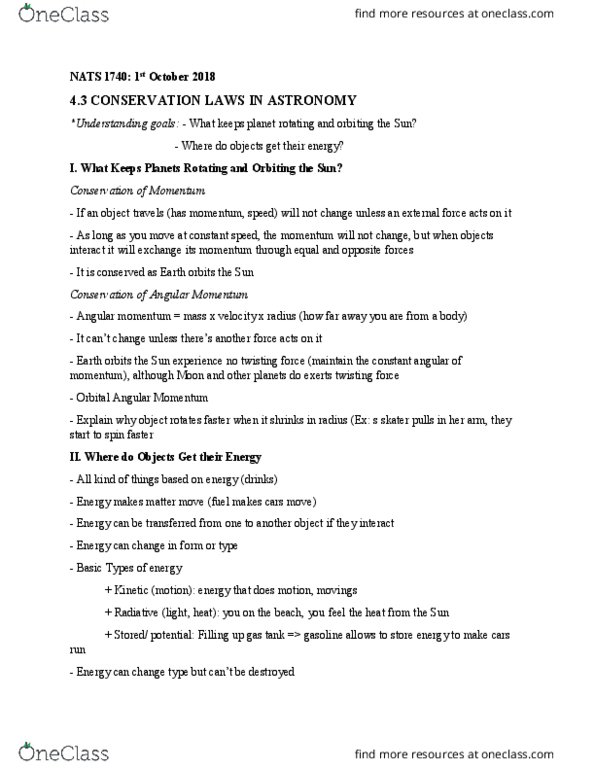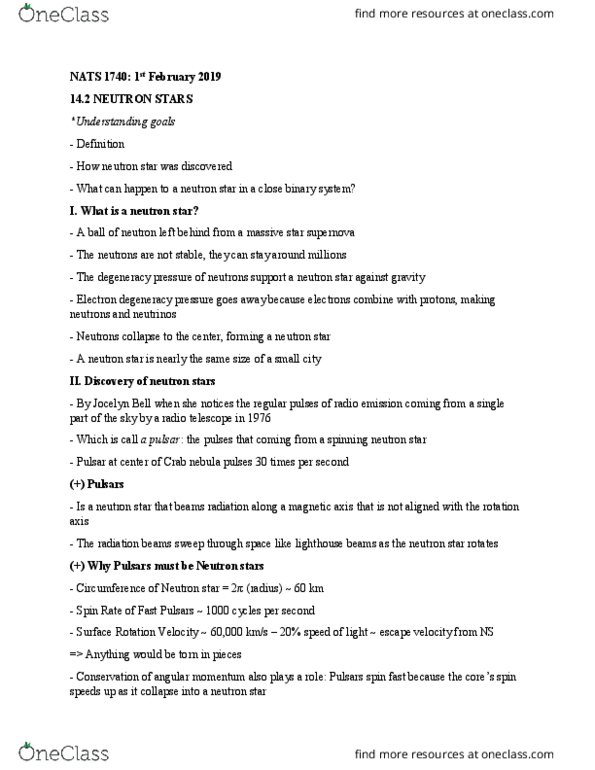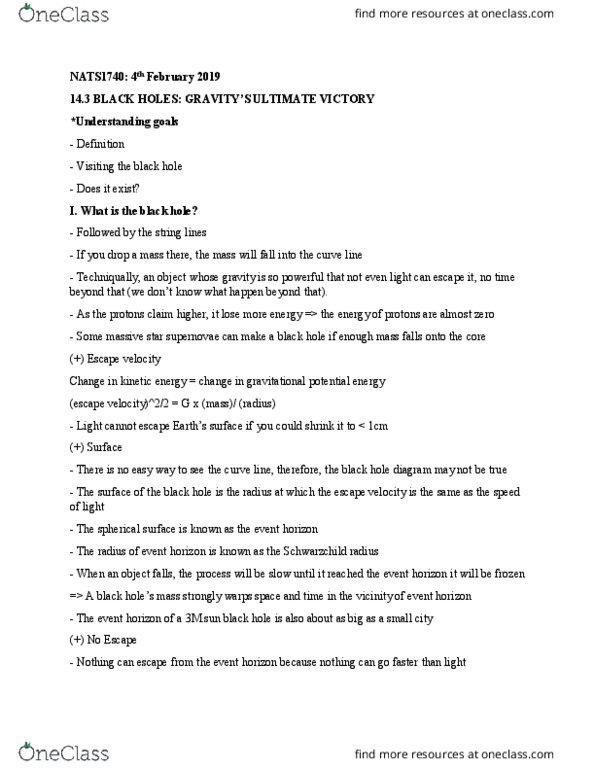NATS 1740 Lecture Notes - Lecture 13: Crab Nebula, Degenerate Matter, Escape Velocity
NATS 1740 verified notes
13/37View all
Document Summary
A ball of neutron left behind from a massive star supernova. The neutrons are not stable, they can stay around millions. The degeneracy pressure of neutrons support a neutron star against gravity. Electron degeneracy pressure goes away because electrons combine with protons, making neutrons and neutrinos. Neutrons collapse to the center, forming a neutron star. A neutron star is nearly the same size of a small city. By jocelyn bell when she notices the regular pulses of radio emission coming from a single part of the sky by a radio telescope in 1976. Which is call a pulsar: the pulses that coming from a spinning neutron star. Pulsar at center of crab nebula pulses 30 times per second (+) pulsars. Is a neutron star that beams radiation along a magnetic axis that is not aligned with the rotation axis. The radiation beams sweep through space like lighthouse beams as the neutron star rotates (+) why pulsars must be neutron stars.




